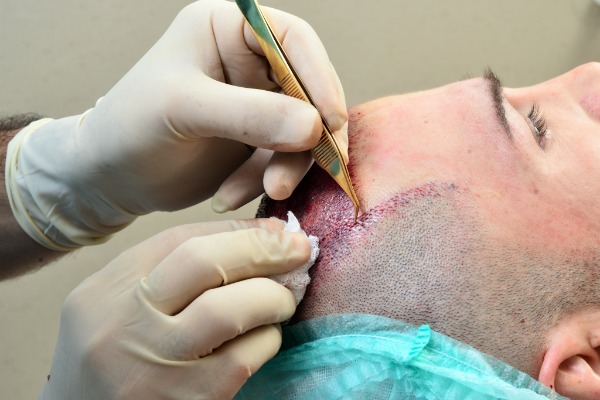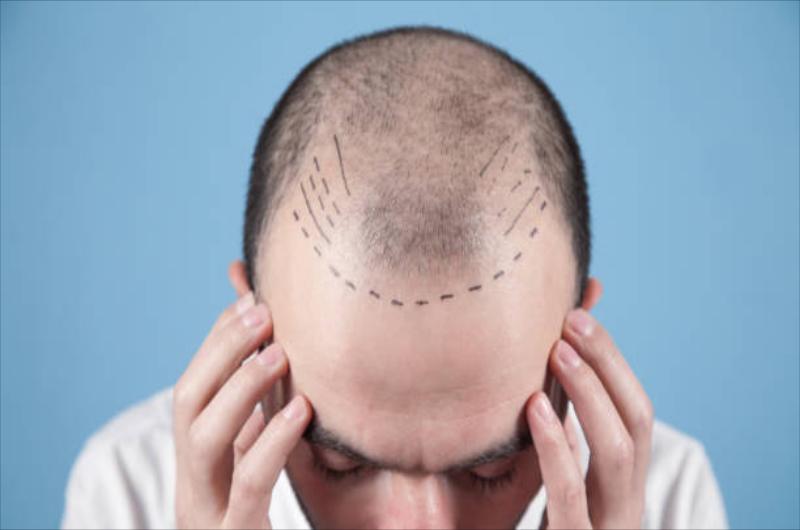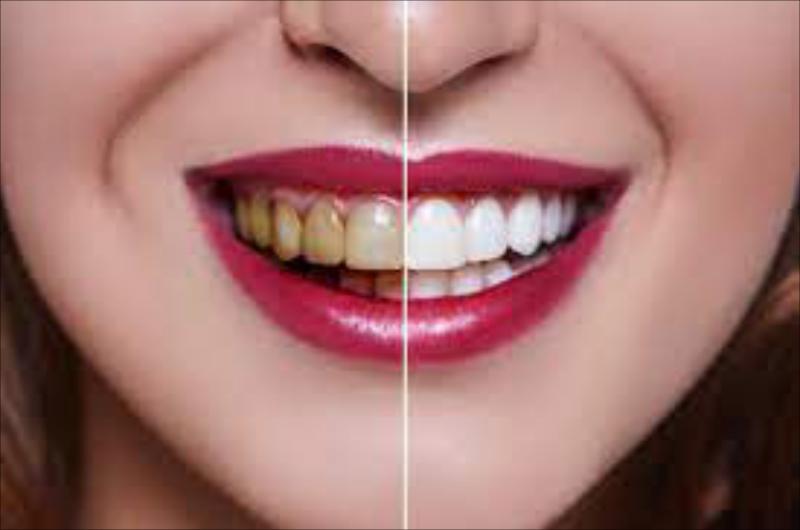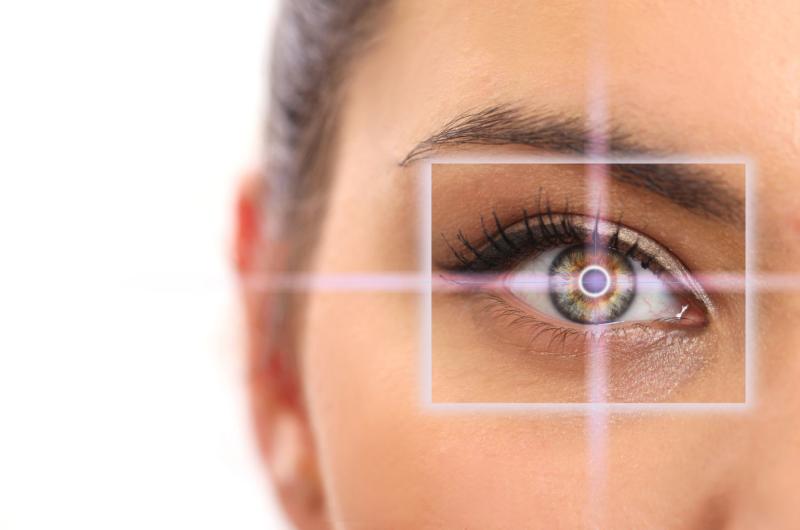About Treatment
According to statistics, the most common cause of hair loss is androgenic (or androgenetic) alopecia. Scientists can not yet thoroughly explain the mechanism of its development, but it is already obvious that the enzyme 5-alpha-reductase has the main effect on hair loss - it is he who is “guilty” of the fact that testosterone changes its passive form to active and becomes dihydrotestosterone (DHT). DHT acts on some receptors in the hair follicles, thereby inhibiting their activity - making the hair growth cycle shorter and the hair itself thinner. The process of “falling asleep” and then the hair follicles fall out can take from several months to several years - in the end, the hair on the top of the head (where the 5-alpha-reductase enzyme is most active) simply stops growing.
Men face the problem of hair loss even before the age of 35. People solve this problem in different ways - some use special shampoos and lotions, hoping to get their hair back, others buy wigs, others reconcile, and others begin to think about hair transplant.
Transplantation solves a variety of problems - for example, it helps to return thick eyebrows, mustache or beard, to hide scars after accidents or operations.
Hair Transplant Methods
Three methods of hair transplantation are currently used: surgical, partially non-surgical FUT and FUE, as well as a technique that does not involve the use of a scalpel HFE.
Preparation for the Procedure
The essence of the preparatory phase is as follows:
Before and after hair transplant
For 48 hours, you must abandon alcohol.
A preliminary blood test is performed to determine:
hemoglobin level; coagulability; glucose concentration; analysis for hepatitis B and syphilis;
ECG is prescribed.
On the day of the procedure, on the head area where the donor material comes from, the hair is trimmed to 1-2 mm.
If a hair transplant is planned using the FUE method, a preliminary test (FOX test) is possible to determine the quality of the extraction of donor hair in each case. For this purpose, an analgesic substance is injected into the scalp and approximately 100 grafts (donor hair) are extracted for further examination under a microscope. With normal extraction of most of the hair (it is due to the anatomical features of the patient), FUE can be performed. In other cases, the operation technique is replaced by FUT.
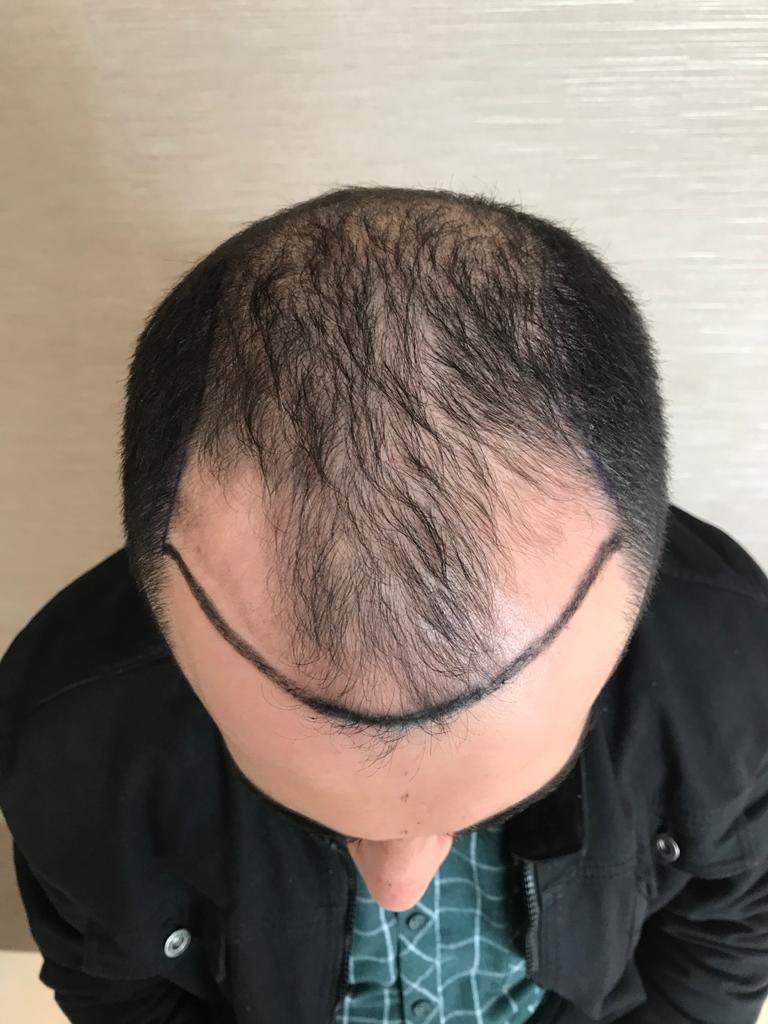
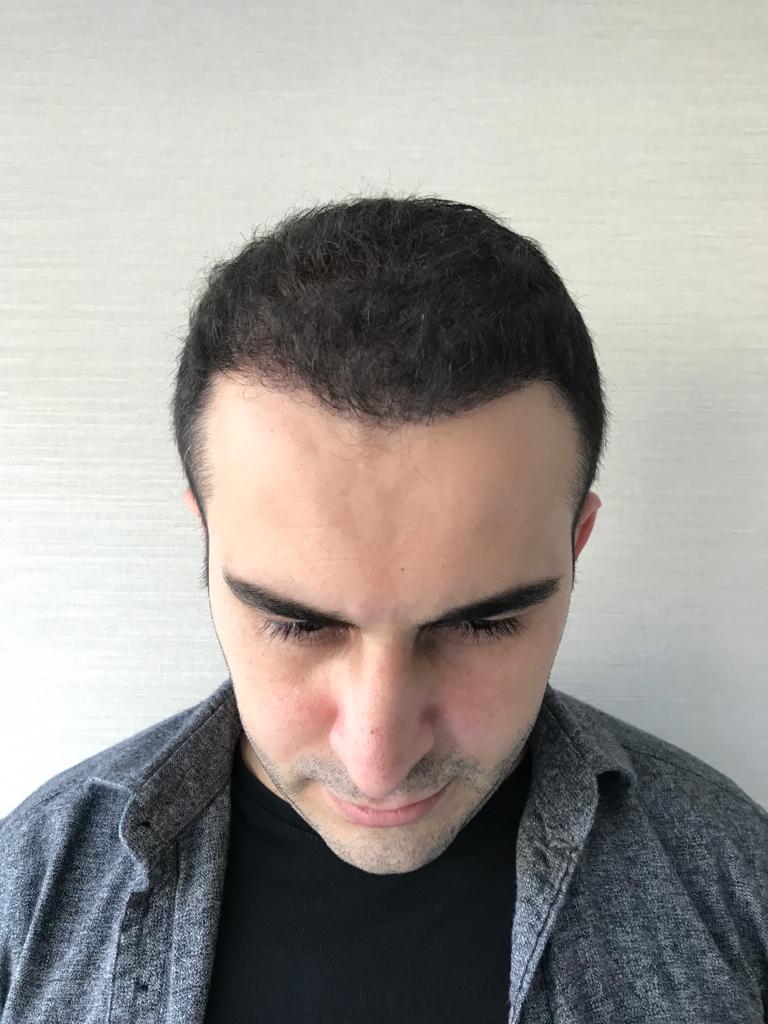
In the case of a hair transplant, a woman needs to conduct a series of tests to determine the exact cause of their loss, since in some cases transplantation cannot help.
Blood test: determine the level of hemoglobin, ferritin, the content of sex hormones, the concentration of zinc;
Examination of the scalp and hair.
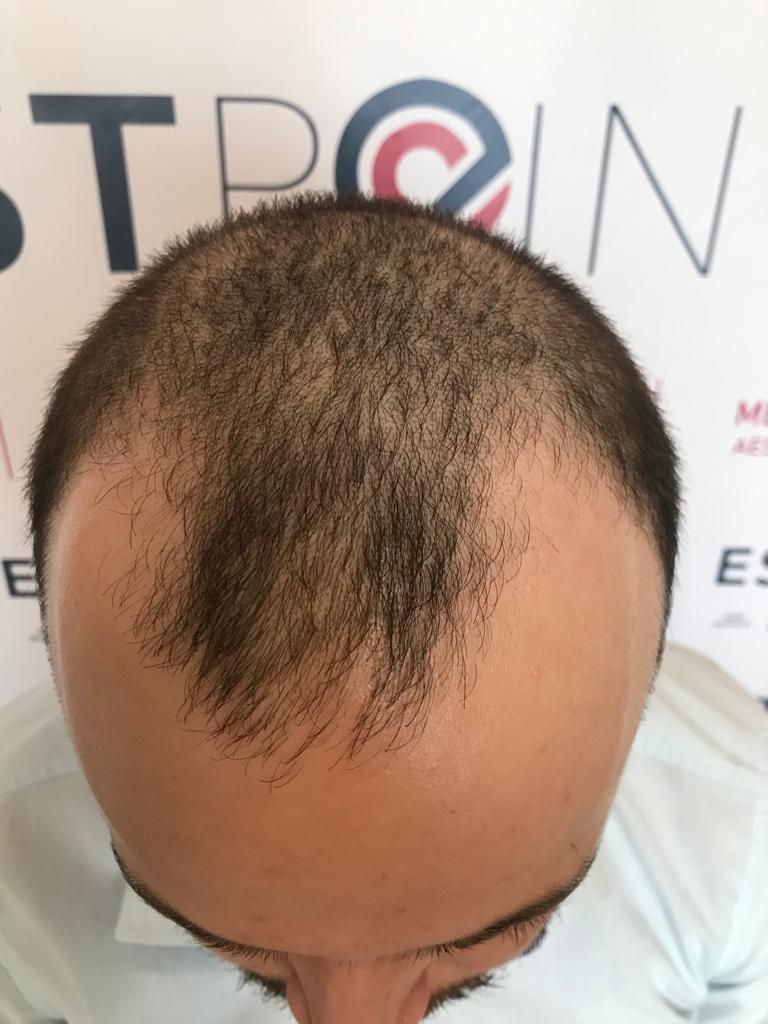
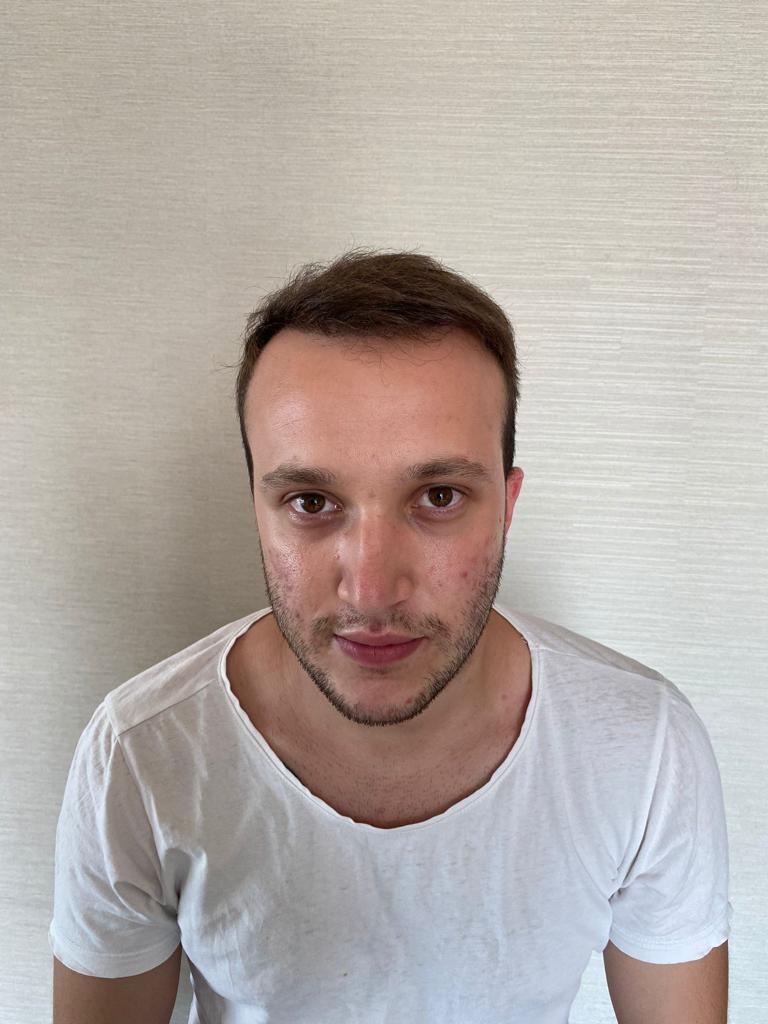
-
Procedure Duration
Hair transplant in the baldness area - the duration of this stage is determined by the number of grafts being transplanted and can be 3-12 hours.
-
Results
In order for visible results to appear, treatment is required from 8 to 12 months. During this period, the growth and thickness of hair is restored. The baldness formed by alopecia is eliminated. 3 months after the procedure, new hair appears, and the painful area becomes similar to the rest. Androgenic alopecia is unlikely to occur with transplanted hair, and therefore the loss in this area stops.
-
Advantages
At any stages of alopecia, transplantation is carried out painlessly and comfortably, as an outpatient, most often - in one session. If necessary (large areas of baldness) they are performed twice. Transplant recovery period is quite short and the transplanted hair grows throughout your life. Hair transplantation is a unique way that has a huge advantage over wigs, as you get your new hair.
In the 1990s, the FUT method - Follicular Unit Transplantation - became the main standard in hair transplantation. During such an operation, individual hair follicles were removed from the patient’s donor skin, then they were transplanted to the necessary parts. The result was much more natural, but still far from perfect, so in 2003 another partially non-operational method appeared - the method FUE Follicular Unit Extraction. The procedure for hair transplantation looks something like this: hair follicles are taken directly from the scalp without the need to stitch in the donor area, transferred to the necessary area.
This method was developed about 20 years ago - then scientists found that hair grows in groups of two or three follicles, and decided to try combining FUE, during which the doctor takes out the hair follicles manually, non-surgical hair transplantation FUI.
The new technique was called Hand Follicul Extraction HFE - and at the moment it is considered the safest and most effective way to return the patient the desired amount of hair. When carrying out transplantation according to this technique, neither a scalpel nor any mechanisms are used: healthy follicles are removed from the area on the back of the patient’s neck using a miniature tube with a diameter of 0.5-0.9 mm - this is important because it helps not to damage the hair roots and the scalp of the patient.
The whole procedure is less traumatic and does not require anesthesia - it is performed under local anesthesia. Usually, at the first stage, hair is transplanted with a density of up to 80 follicles per 1 square centimeter, which looks quite natural. Since the natural density is 80–100–120 hair per cm2, some patients want a second transplant to achieve a higher density - about 100–120 hair per square centimeter. Small wounds - their diameter is usually no larger than the injection mark - heal within a few days without causing bruising and swelling, which are often found during surgery. And most importantly, it has been proven that hair transplanted in this way grows completely and does not fall out: unless a person has to endure stress, undergo chemo- or radiotherapy, suffer a lack of vitamins, etc.
Androgenetic alopecia in men and women.
Cicatricial changes in the skin after injuries, burns, surgical interventions on the face and head, and inflammatory skin diseases.
Congenital high location of the hairline and deep frontotemporal areas of lack of hair.
Correction of the shape of the growth of eyebrows, beard and mustache.
Of course, there are absolute restrictions, but they are not so many: for example, patients who have blood clotting disorders, as well as those who cannot tolerate anesthesia or its individual components, are not recommended to perform surgery.
Relative contraindications to hair transplantation are considered high blood pressure, diseases of the cardiovascular system and heart surgery, cancer (in this case, permission for hair transplantation from the attending physician is necessary) and diabetes mellitus (there is a risk of postoperative infections and difficulties with hair grafting) .

